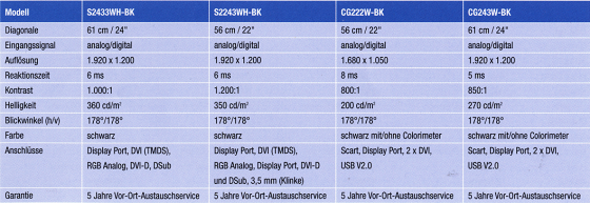
Technical advantages dominate communication with the customer.
Advertising brochures, catalogues, online promotions, spots and similar etc. seduce us into buying electronic appliances all the time that later prove to be needless energy guzzlers. So who is responsible for this: the customer or the marketing departments at the companies selling the products?
An example
An IT distributor sends us their brochure several times a year promoting video and graphic output devices. The brochure has improved a lot in many ways, but one thing is still missing: the information on the electricity consumption for the monitors.

An IT reseller leafs through a 15 page brochure containing larges-scale pictures of monitors and the technical data on them without coming across any information on energy consumption. However, the specifications of monitors are very easy to compare during normal work in the office or over the Internet. The customer would be able to choose the monitor equipped with advanced, energy-efficient technology if in the position to make a comparison.
Buying energy-efficient IT systems is made difficult for the customer.
Thousands of resellers purchase their stock from globally active distributors. In turn, many hundreds of thousands of customers and companies buy from these resellers. However, the overall information on a monitor’s electricity consumption (off, standby, idling, in operation) remains useless if unavailable to the reseller and hence to the consumer.
Pan-European energy efficiency label for computers.
Examples like this show why environmental protection associations renew their demands for a pan-European energy efficiency label for IT systems each year at the CeBIT. Customers frequently have no chance of comparing monitors or computers when it comes to energy efficiency.
Marketing departments or the customer – who needs to make improvements here?
Is it the marketing departments that are still not prepared enough to inform the customer in detail about more environmentally-friendly, more energy-efficient products, or is information simply being left out because the customer isn’t asking for it?
